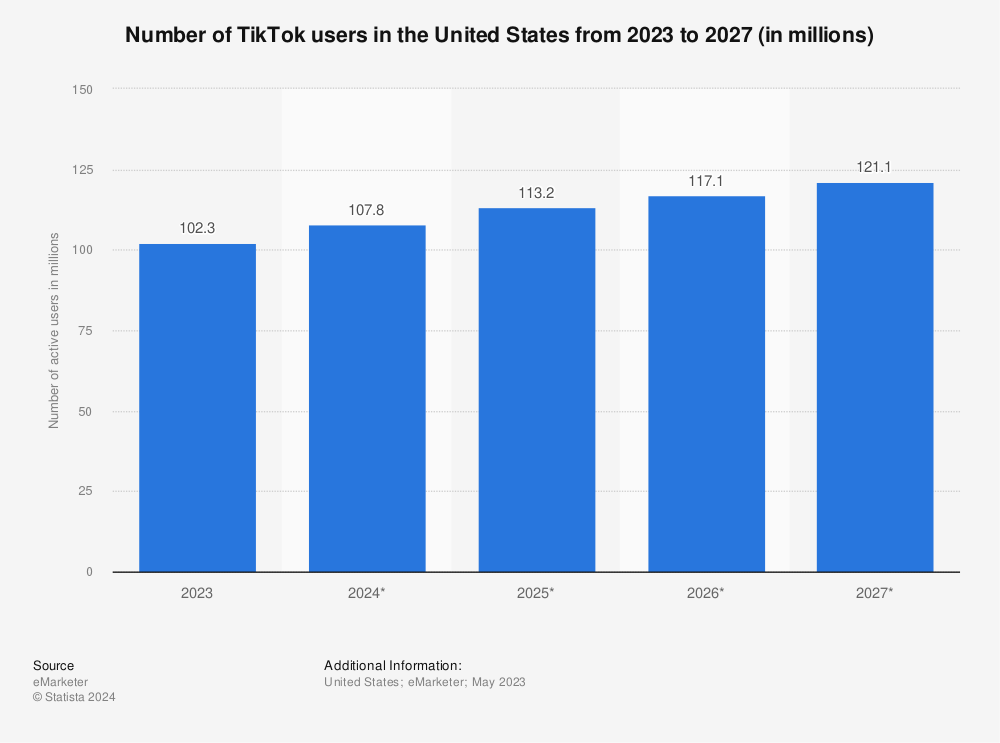Why Your Brand Should Be Using TikTok Influencers
To scads of people out of their twenties, the word “TikTok” still elicits not a few head-tilts of confusion whenever it crops up in conversation. ‘Are we talking about a nursery rhyme here?’ the listeners seem to wonder. ‘Isn’t that an app where teenagers are always dancing?’ The answer to the first question: Uh, no. And to the second: Kinda … but no. Allow us to explain.
TikTok is, indeed, one of the most popular social media platforms today. Launched in 2017, it reported having 78.7 million users in 2021, with over two billion global downloads, to boot. Yes, it began as an app where teenagers karaoked and showed off dances and made clips to popular songs, and it still mostly caters to a youthful demographic. (As of January 2022, 47.4% of TikTok’s active users are 10–29-year-olds.) But TikTok also offers brands—and people over 30—opportunities to invest in influencer marketing campaigns that can drum up millions of impressions and attract new customers.
Read on for our analysis of TikTok—how it started, how it works, and how it’s different from other social media apps—and how you can invest marketing dollars in it to your advantage (with the help of TikTok influencers).
What is TikTok?
TikTok was released in 2016 in China as “Douyin,” but the name changed to TikTok when it hit iOS and Android markets outside mainland China in 2017. A year later, it merged with another Chinese app, Musical.ly, and the combined app was rebranded internationally as the TikTok we US Americans know and love. (The TikTok-Musical.ly merger made sense because both apps were premised on a young audience sharing videos of themselves lip syncing.)
Today TikTok resembles another video platform, YouTube, with one notable distinction: You can buy feature-length films on YouTube, whereas the videos on TikTok are quite short. (The longest videos that users can upload clock in at three minutes.) They’re also generally filmed in a vertical format, or how people tend to hold their phones. TikTok’ers still perform original music as well as cover favorite songs, but other types of videos now pour through the platform—skits, beauty tips, cooking tutorials, videos based on trending sounds or hashtags. Oh, and there are plenty of influencer videos, too. But we’ll get there.
How Does TikTok’s Algorithm Work?
Marketers who tout TikTok point out that users don’t have to toil away for months or years to generate a sizeable following, because its algorithm shows users videos they’ll probably like according to hashtags and accounts they follow, videos they’ve watched or audio clips they’ve listened to before, as well as other variables. So even if you don’t command a large following, if you work popular audio into your videos or tee them up with trending hashtags, you have as much of a chance of your content going viral as an established influencer.
TikTok’s algorithm, then, differs from the algorithms of many other social media platforms, which tend to be structured so the content of users with lots of followers is seen more than users with fewer followers. Creating a video on TikTok that interweaves trending elements is usually a smarter strategy than simply attracting more eyeballs—which, the argument goes, keeps the competition fierce but the content fresh.
TikTok’s (Anti-Marketing) Marketing Potential
TikTok provides its users with a suite of editing features—you can slap captions onto your videos, enhance their lighting, work in musical and animal effects—but those videos still feel preeminently user-generated. Makes sense, except it’s worth noting that TikTok content is a marked contrast to the professional-caliber footage you often find on YouTube. For years now, it’s been a truism that Generation Z (TikTok’s primary audience) seeks out digital experiences that don’t seem curated and trusts brands that feel authentic. Which means the worst mistake you can make on TikTok is to serve users an ad that feels like an ad.
Enter TikTok influencer marketing. Partnering with influencers whose videos consistently go viral can be an excellent way to reach your target audience—presuming your target audience frequents TikTok. Creating email campaigns for a senior living brand? Probably not wise to spend too much of your ad budget on TikTok influencers. Unless those emails are marketed to the adult daughters of seniors, and you just realized that while TikTok feels youth-oriented, 21.7% of its users are aged 30–39 and 20.3% are 40–49. So, find out if your audience is on TikTok, and if they are, hit up an influencer they relate to.
Think Organic
Once you strike a deal with a TikTok influencer, resist the urge to be prescriptive. Followers trusted this influencer before you came on the scene, and if you start creative-directing her, her audience may sense that her content is becoming staid and salesy. Sure, have a conversation about what you want to accomplish, but after you and the influencer align on campaign goals, don’t give her a script. Don’t bring in a film crew. Don’t lecture her about the brand voice. Trust her to promote your product or service with videos that she makes and that seem sincere.
Challenges, tutorials, brand takeovers, even a funny dance skit—the most effective ads of the near future may be the ones that don’t feel like ads at all. Make peace with that fact, and your brand may be more likely to stay relevant for years to come.



